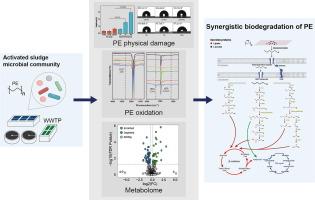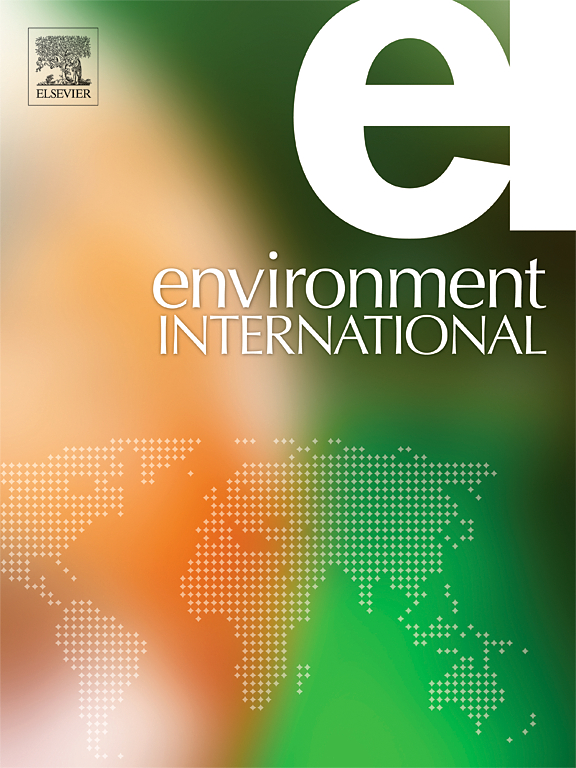Genomic insights and metabolic pathways of an enriched bacterial community capable of degrading polyethylene
IF 10.3
1区 环境科学与生态学
Q1 ENVIRONMENTAL SCIENCES
引用次数: 0
Abstract
In the face of mounting global plastic pollution, especially concerning microplastics, biodegradation must be a sustainable solution. The key factor driving this technology is to explore efficient plastic-biodegraders from different habitats, among which activated sludge (AS) may be an important option since it holds diverse microorganisms occupying various ecological niches. Here we intend to enrich the plastic-degrading microorganisms from AS by using polyethylene (PE) plastic as the carbon and energy source. After a 28-day incubation, the weight loss of PE films reached 3% and the hydrophobicity decreased, indicating physical biodegradation. Moreover, Fourier-transform infrared spectroscopy (FTIR) results showed the formation of several new oxygen-containing functional groups on PE. Microbial analysis extracted 26 metagenome-assembled genomes (MAGs) from the enriched microbial communities. Among them MAG10, MAG21 and MAG26 displayed the increased abundance upon PE addition and harbored abundant genes related to carbohydrate transport and metabolism, suggesting their potential to degrade PE. Additionally, functional analysis revealed 14 plastic degradation-related genes, including oxidase, laccase, and lipase, indicating the significant potential in plastic degradation. Furthermore, a pathway for synergistic biodegradation of PE was proposed based on the potential PE degradation genes retrieved from MAGs. This work offers a promising and sustainable solution to plastic pollution by enriching the potential biodegraders from AS.


求助全文
约1分钟内获得全文
求助全文
来源期刊

Environment International
环境科学-环境科学
CiteScore
21.90
自引率
3.40%
发文量
734
审稿时长
2.8 months
期刊介绍:
Environmental Health publishes manuscripts focusing on critical aspects of environmental and occupational medicine, including studies in toxicology and epidemiology, to illuminate the human health implications of exposure to environmental hazards. The journal adopts an open-access model and practices open peer review.
It caters to scientists and practitioners across all environmental science domains, directly or indirectly impacting human health and well-being. With a commitment to enhancing the prevention of environmentally-related health risks, Environmental Health serves as a public health journal for the community and scientists engaged in matters of public health significance concerning the environment.
 求助内容:
求助内容: 应助结果提醒方式:
应助结果提醒方式:


